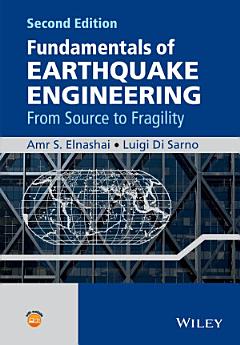Fundamentals of Earthquake Engineering: From Source to Fragility, Edition 2
អំពីសៀវភៅអេឡិចត្រូនិកនេះ
The nature of earthquake risk assessment is inherently multi-disciplinary. Whereas this book addresses only structural safety assessment and design, the problem is cast in its appropriate context by relating structural damage states to societal consequences and expectations, through the fundamental response quantities of stiffness, strength and ductility.
This new edition includes material on the nature of earthquake sources and mechanisms, various methods for the characterization of earthquake input motion, effects of soil-structure interaction, damage observed in reconnaissance missions, modeling of structures for the purposes of response simulation, definition of performance limit states, fragility relationships derivation, features and effects of underlying soil, structural and architectural systems for optimal seismic response, and action and deformation quantities suitable for design.
Key features:
- Unified and novel approach: from source to fragility
- Clear conceptual framework for structural response analysis, earthquake input characterization, modelling of soil-structure interaction and derivation of fragility functions
- Theory and relevant practical applications are merged within each chapter
- Contains a new chapter on the derivation of fragility
- Accompanied by a website containing illustrative slides, problems with solutions and worked-through examples
Fundamentals of Earthquake Engineering: From Source to Fragility, Second Edition is designed to support graduate teaching and learning, introduce practising structural and geotechnical engineers to earthquake analysis and design problems, as well as being a reference book for further studies.
អំពីអ្នកនិពន្ធ
Luigi Di Sarno University of Sannio, Italy





